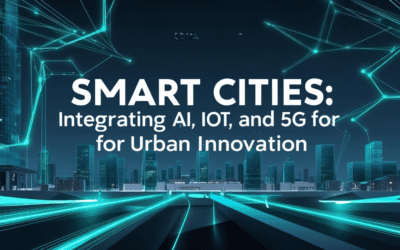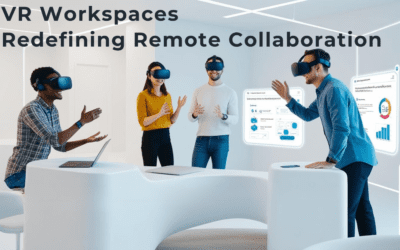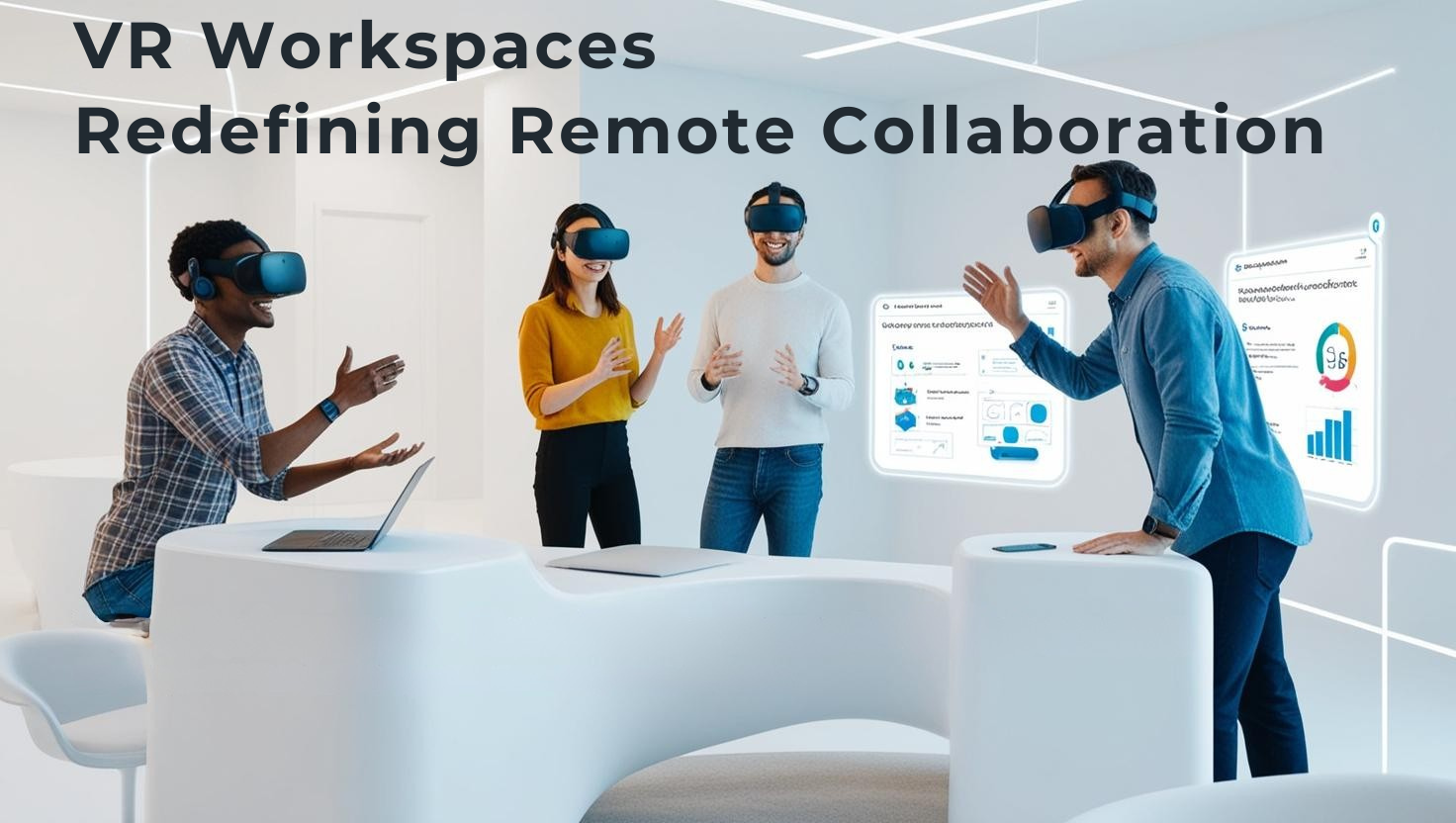The rise of remote work has reshaped how teams collaborate, but traditional video calls and Slack channels often fall short in fostering true engagement. Enter VR workspaces—virtual environments where teams interact in 3D, share digital assets in real time, and collaborate as if they’re in the same room. By 2029, the global VR market is projected to hit $227 billion (Grand View Research), driven by demand for immersive solutions. In this guide, we’ll explore how VR workspaces are redefining remote collaboration, backed by data, case studies, and strategies to help your team adopt this game-changing tech.
1. What Are VR Workspaces?
Immersive Collaboration Beyond Flat Screens
VR workspaces leverage virtual reality to create shared digital environments where users, represented by avatars, can meet, brainstorm, and manipulate 3D objects. Unlike Zoom grids, these platforms simulate physical presence, enabling nuanced interactions like eye contact, spatial audio, and gesture-based communication.
Key Features:
- Shared whiteboards for real-time ideation.
- 3D model manipulation for design and engineering teams.
- Persistent virtual rooms that save progress between sessions.
2. Why VR Workspaces Are Revolutionizing Remote Work
Bridging the Engagement Gap
A 2023 Microsoft study found that 43% of employees feel disconnected in hybrid meetings. VR workspaces address this by replicating the dynamism of in-person collaboration:
- Increased focus: Users are 40% less distracted in VR meetings vs. traditional video calls (Stanford VR Study).
- Enhanced creativity: Teams using VR for brainstorming generate 25% more ideas (PwC Report).
Cost and Time Savings
- Reduced travel: BMW saved $320,000 annually by using VR to connect global engineering teams (Forbes).
- Faster prototyping: Automotive designers cut review cycles by 50% with VR-powered 3D modeling.
3. Real-World Examples of VR Workspaces in Action
Case Study 1: Meta Horizon Workrooms
Meta’s platform allows teams to host meetings in customizable virtual offices. Features include:
- Spatial whiteboards for sketching ideas.
- Screen sharing within VR environments.
- Passthrough mode to blend physical desks with virtual tools.
Case Study 2: Spatial
Used by Nike and Pfizer, Spatial enables cross-functional teams to collaborate on 3D designs. A Pfizer team reduced drug development feedback loops by 30% using shared VR models.
Case Study 3: ENGAGE VR
This enterprise-grade platform hosts global conferences and training. Deloitte reported a 35% boost in employee retention after switching to ENGAGE for onboarding.
4. Challenges of Adopting VR Workspaces
Technical and Cultural Hurdles
While promising, VR workspaces face barriers:
- Hardware costs: High-end headsets like Meta Quest Pro ($1,499) require upfront investment.
- Motion sickness: 25% of users experience discomfort in prolonged sessions (Johns Hopkins Study).
- Interoperability: Fragmented ecosystems complicate file sharing across platforms like Microsoft Mesh and Oculus.
Strategies to Overcome Challenges
- Start small: Pilot VR meetings with a single team before scaling.
- Subsidize hardware: Offer stipends for employees to purchase headsets.
- Train users: Host VR literacy workshops to ease the transition.
5. The Future of VR Workspaces: Trends to Watch
AI-Powered Avatars and Haptics
Future VR workspaces will integrate:
- AI-driven avatars that mimic facial expressions using voice analysis (e.g., NVIDIA’s Omniverse Avatar).
- Haptic gloves to simulate touch, like Meta’s prototype enabling users to “feel” virtual objects.
5G and Edge Computing
Faster networks will enable lag-free collaboration, even with photorealistic graphics. Ericsson predicts 5G will cover 75% of the global population by 2027, supercharging VR accessibility.
6. How to Implement VR Workspaces in Your Organization
Step 1: Choose the Right Platform
| Use Case | Recommended Platform |
|---|---|
| Design Collaboration | Gravity Sketch |
| Large-Scale Meetings | ENGAGE VR |
| Hybrid Office Integration | Meta Horizon Workrooms |
Step 2: Invest in Essential Tools
- Headsets: Meta Quest 3 (budget-friendly) or Varjo XR-4 (high-fidelity).
- Software: Apps like MURAL VR for collaborative whiteboarding.
Step 3: Measure ROI
Track metrics like:
- Meeting efficiency (time saved vs. traditional methods).
- Employee satisfaction (post-VR session surveys).
Conclusion: Embrace VR Workspaces to Stay Ahead
VR workspaces are not a sci-fi fantasy—they’re a practical solution to the engagement and innovation gaps plaguing remote teams. By 2025, Gartner predicts 25% of enterprises will adopt VR for meetings, making now the time to experiment. Start with pilot projects, gather feedback, and scale strategically.
Your Action Plan:
- Research platforms: Book demos with Spatial or Horizon Workrooms.
- Train champions: Identify tech-savvy employees to lead VR adoption.
- Iterate: Continuously refine workflows based on team input.
The future of collaboration is immersive. Will your organization be ready?
Sources:
- Grand View Research, VR Market Size
- PwC VR Training Study
- Ericsson 5G Forecast
- Microsoft Hybrid Work Report
Stay innovative with The ProTec Blog—your guide to tomorrow’s workplace tech.


















